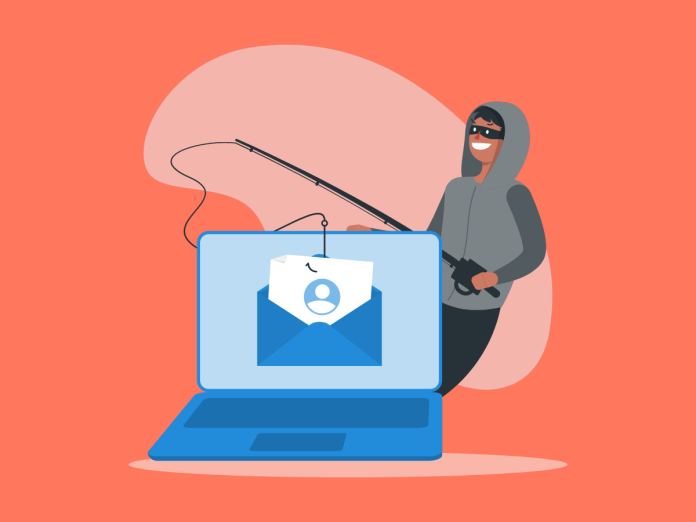In our digital economy, the threat of cybercrime has become more prevalent than ever. Among the numerous tactics employed by malicious actors, phishing email remains a formidable weapon in their arsenal. Phishing emails are cunning attempts to deceive individuals into divulging sensitive information or unknowingly downloading malware. This article is written to empower you with the knowledge to identify and thwart phishing email scams.
Table of Contents
What Is a Phishing Email?
A phishing email is a fraudulent attempt by scammers to obtain personal and sensitive information from unsuspecting victims. These emails are often designed to appear as if they come from legitimate sources, such as banks, online services, or even colleagues. The goal is to trick recipients into taking actions that could compromise their security, such as clicking on malicious links or sharing confidential data. According to a 2023 report by Mimecast, 75% of companies have experienced an increase in email-based threats.
How to Spot a Phishing Attack
Phishing emails often exhibit telltale signs that something isn’t right. They might employ generic greetings like “Dear Customer” instead of addressing you by name. Fraudsters often use familiar logos, headers, and even sender addresses that closely resemble legitimate sources. The language could be overly urgent or threatening, attempting to create a sense of panic. Such tactics are meant to catch you off guard and prevent rational thinking.

Be cautious when you receive an email that requests personal information or login credentials. Legitimate companies typically won’t ask for sensitive data via email. Fraudsters often try to capitalise on the fear of missing out or account deactivation to prompt quick responses.
Hover your mouse over any link in the email without clicking on it. This simple action reveals the actual URL the link points to. Scammers often hide the destination address behind a legitimate-looking anchor text.
Anatomy of a Phishing Email With Examples
Consider an email supposedly from a renowned financial institution, urging you to update your account information urgently. The email might contain alarming language, asserting that failure to comply will result in account suspension. This is where your vigilance comes into play. To gain a deeper understanding, let’s break down the anatomy of a phishing email, using examples to illustrate key points:
Subject Lines that Raise Flags: Phishing emails frequently employ subject lines that provoke urgency or curiosity. For instance, “Your Account Will Be Deactivated” or “Claim Your Prize Now” can entice recipients to take action without thinking.
Clues in the Sender’s Email Address: Fraudsters often use email domains that mimic legitimate ones. For instance, an email claiming to be from MCloud9 might have a domain like “mcloud9-support.co.za“. Always double-check the sender’s address for discrepancies.
Identifying Common Indicators of Phishing Emails (Attachments, Subject Lines, and More)
There are several signs of a phishing email that, once recognised, can save you from potential harm:
Unsolicited Emails: Beware of unsolicited emails, especially those with generic greetings.
Poor Spelling and Grammar: Poor spelling and grammar are red flags
Attachments: Beware the Download: Emails with attachments, especially from unknown senders, should be treated with caution. Hackers often use emails that contain links or attachments to spread malware that can compromise your computer or steal sensitive data. Instead of opening an attachment directly, consider verifying its legitimacy with the sender through another channel.
Subject Lines Matter: Scammers exploit the subject lines to grab your attention and instil a sense of urgency. A subject line like “Immediate Action Required” can trigger panic, leading you to act impulsively. Reputable companies prioritise clear and informative subject lines.
Checking Email Addresses and Domains
Verify the sender’s email domain to ensure its authenticity. Public email domains, such as Gmail or Yahoo, are rarely used by reputable businesses. A legitimate company like MCloud9 would use its own domain for professional correspondence.
Hovering your mouse cursor over any links in the email reveals the actual URL
As mentioned earlier, hovering your mouse cursor over any links in the email reveals the actual URL (usually at the bottom corner of your web browser). Scammers often hide dangerous URLs behind hyperlinked text. A trustworthy company ensures that all links are transparent and directly related to their domain.
Protecting Yourself From Phishing Scams
Educate Yourself: One of the most effective ways to protect yourself from phishing attacks is to stay informed. We recommend participating in email security and phishing awareness training programs. These programs equip you with the skills to recognise phishing attempts and respond appropriately.
Use Advanced Email Filters: Take advantage of advanced email filtering tools offered by reputable email providers. These filters can identify and quarantine potential fraudulent emails before they reach your inbox. MCloud9’s commitment to security ensures that its email services include robust filtering mechanisms.
Regularly Update Your Passwords: Keeping your passwords up-to-date is an effective way to thwart phishing attempts.
FAQ for Phishing Emails
What is a phishing email?
A phishing email is a type of harmful email that is designed to trick the recipient into disclosing delicate information or clicking on a malicious link.
What are the dangers of phishing emails?
The dangers of fraudulent emails include the risk of a data breach, compromised email accounts, and potential financial loss if personal or banking information is disclosed.
What should I do if I suspect an email is a scam?
If you suspect an email is a scam, do not click on any links or provide any personal information. Instead, report the email to your email service provider and delete it from your inbox.
How can I avoid getting caught by a phishing email?
There are several ways to avoid scam emails:
– Never click on a link or open an attachment in an email if you are unsure of its origin.
– Be cautious of emails that ask you to provide personal information or login credentials.
– Look out for suspicious emails with grammatical errors or inconsistencies.
– Pay attention to the domain name of the sender and make sure it matches the context of the email.
– Consider implementing a phishing staff awareness training programme to educate employees about the severity of fraudulent emails.
How can I report a phishing email?
If you receive a fraudulent email, you can report it to your email service provider. Most email providers have a mechanism in place to report phishing emails.
What should I do if I accidentally click on a link in a phishing email?
If you accidentally select a link in a scam email, the most important thing is not to enter any personal information on the website that the link leads to. Close the browser and run a full scan on your computer with up-to-date antivirus software.
Why do I receive so many phishing emails?
Phishing emails are sent in large volumes to reach as many potential victims as possible. Cybercriminals use automated scripts and techniques to send these emails to a wide range of addresses.
In Conclusion
In the ever-evolving landscape of cyber threats, phishing email remains a persistent danger. As a responsible web hosting and domain registration company, MCloud9 urges you to stay vigilant. By familiarising yourself with the signs of phishing emails, verifying sender information, and employing advanced security measures, you can protect yourself, your business, and your sensitive data from falling into the hands of scammers.


